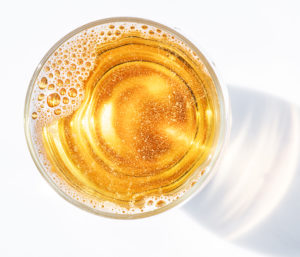The Eternal Appeal of Beer
March has arrived and with it come thoughts of St. Patrick’s Day and naturally, of beer. Beer is the customary accompaniment to classic Irish dishes like corned beef, cabbage, and potatoes. Its zippy flavor refreshes the palate and adds spring to one’s step.
Years ago, the selection of beers available in the USA was rather small and uninspired. Today, with the burgeoning craft beer movement, there seem to be as many varieties of beer as there are stars in the sky. How can you choose just one when the possibilities include hefeweizen, milk stout, sparkling pilsner, porter, and fruit lambic? It’s all a matter of taste.
Beer has been a favorite drink of the populace for thousands of years. One of the world’s oldest drinks, a form of beer was produced in Mesopotamia 6,000 years ago. Beer was enjoyed as a common beverage and also included in religious ceremonies. Nowadays, almost all countries manufacture some version of beer including traditional wine-producing countries such as France and Italy. From north to south, east to west, beer is found from North America to the Pacific Rim, Europe to South Africa.
Beer is made from grain (usually barley, but also wheat, corn, and rye)), yeast, hops, and water. From this humble beginning come beers replete with a complex symphony of colors, aromas, and flavors. The glorious tradition of beer making in Europe is a source of great pride.
Germany is known for its incredible beer gardens featuring massive steins of wonderful German beer. Great Britain is celebrated for its flavorful and robust stouts and porters. Belgium is the master of fruit beer lambic, offering splendid flavors of fresh fruit and locally sourced spices, flowers, and herbs. The Czech Republic perfected the art of mashing, creating world-famous pilsner-style beer, golden and clear, which eventually became the world’s dominant style of beer.
The USA is the brave new world of beer, taking the science perfected in Europe and pushing the boundaries—producing new and different beers, darker, more bitter, and hoppier than ever before. Beers today are an innovative avenue of creative expression. Beer-makers often experiment with unusual ingredients like honey, coffee, chicory, saffron and licorice. Pairing beer with food is all the rage and many restaurants proudly display their beer lists alongside their wine lists and recommend beer pairings with their culinary creations.
And where does the Emerald Isle fit into all of this? With Guinness, of course. Often referred to as “the black stuff,” Guinness is the world’s most recognizable beer. Actually a dry stout, Guinness is a hearty brew made from barley, hops, and yeast. The addition of dark roasted barley and flaked barley contribute to the deep color, smooth bitter quality, deep fruity flavors, and an aroma akin to slightly burned coffee, while tiny, surging bubbles of nitrogen create the noteworthy white, creamy head on a glass of Guinness.
Guinness was first brewed almost 250 years ago in Dublin by Arthur Guinness. By the advent of the 20th century, Guinness was world famous and producing over a million barrels a year. Guinness is now brewed in more than 40 countries around the world. Commonly sold on tap in the UK and Ireland, Guinness is sold in brown bottles in other parts of the world in a variety of different strengths, from 4.1% to 8% ABV.
Whichever beer of the world might be your favorite (even the obligatory “green beer” seen at so many bars this time of year), be sure to fill your glass high in honor of the good St. Patrick. May the luck of the Irish be with you, and as the Irish say, “Slainte!” or Cheers!